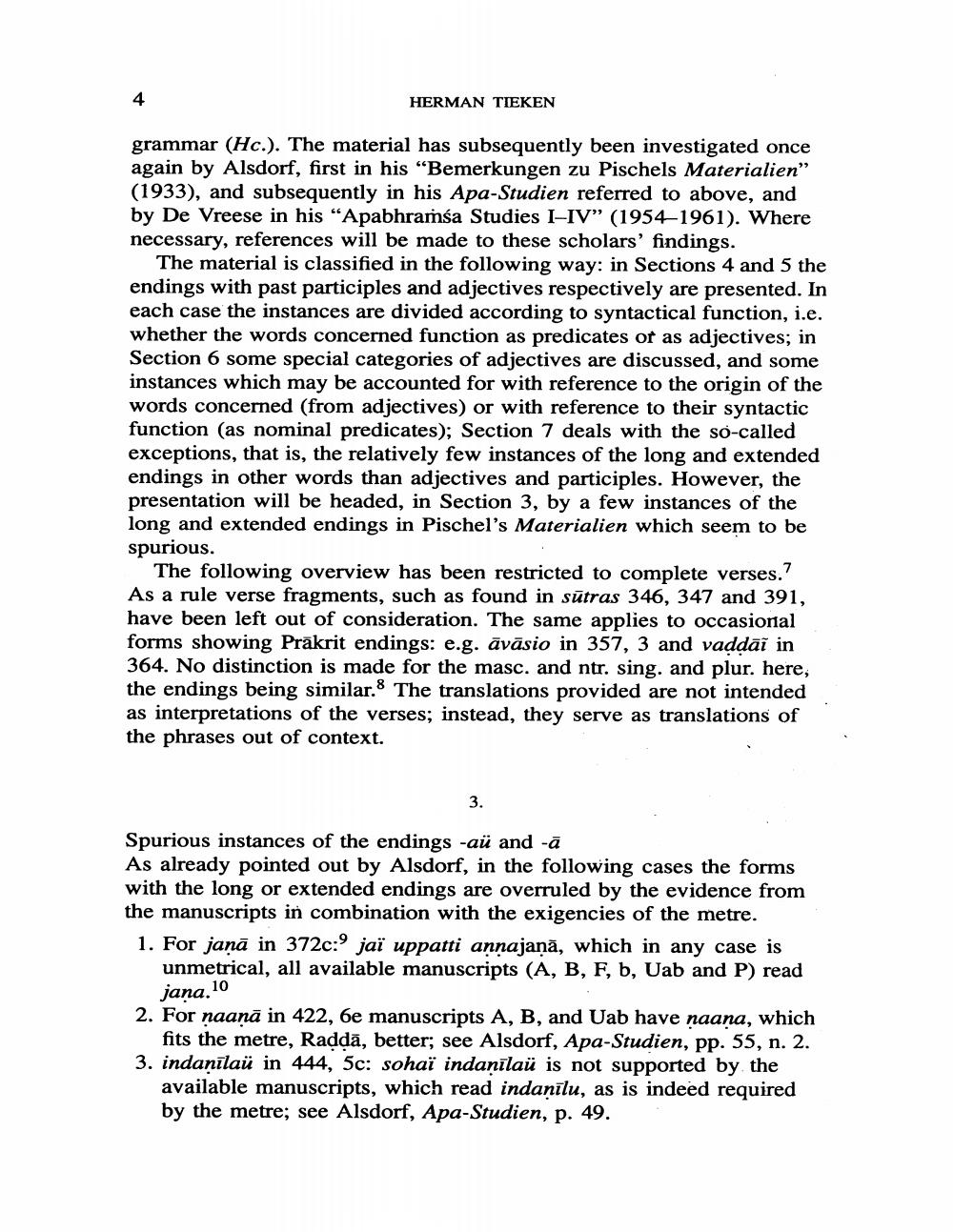________________
4
HERMAN TIEKEN
grammar (Hc.). The material has subsequently been investigated once again by Alsdorf, first in his "Bemerkungen zu Pischels Materialien" (1933), and subsequently in his Apa-Studien referred to above, and by De Vreese in his "Apabhramsa Studies I-IV" (1954-1961). Where necessary, references will be made to these scholars' findings.
The material is classified in the following way: in Sections 4 and 5 the endings with past participles and adjectives respectively are presented. In each case the instances are divided according to syntactical function, i.e. whether the words concerned function as predicates or as adjectives; in Section 6 some special categories of adjectives are discussed, and some instances which may be accounted for with reference to the origin of the words concerned (from adjectives) or with reference to their syntactic function (as nominal predicates); Section 7 deals with the so-called exceptions, that is, the relatively few instances of the long and extended endings in other words than adjectives and participles. However, the presentation will be headed, in Section 3, by a few instances of the long and extended endings in Pischel's Materialien which seem to be spurious.
The following overview has been restricted to complete verses." As a rule verse fragments, such as found in sutras 346, 347 and 391, have been left out of consideration. The same applies to occasional forms showing Prakrit endings: e.g. äväsio in 357, 3 and vaḍḍāi in 364. No distinction is made for the masc. and ntr. sing. and plur. here, the endings being similar. The translations provided are not intended as interpretations of the verses; instead, they serve as translations of the phrases out of context.
3.
Spurious instances of the endings -au and -ā
As already pointed out by Alsdorf, in the following cases the forms. with the long or extended endings are overruled by the evidence from the manuscripts in combination with the exigencies of the metre.
1. For jana in 372c:9 jaï uppatti annajaṇā, which in any case is unmetrical, all available manuscripts (A, B, F, b, Uab and P) read jana, 10
2. For naana in 422, 6e manuscripts A, B, and Uab have ṇaana, which fits the metre, Radda, better; see Alsdorf, Apa-Studien, pp. 55, n. 2. 3. indanilau in 444, 5c: sohaï indanilaŭ is not supported by the
available manuscripts, which read indanilu, as is indeed required by the metre; see Alsdorf, Apa-Studien, p. 49.




